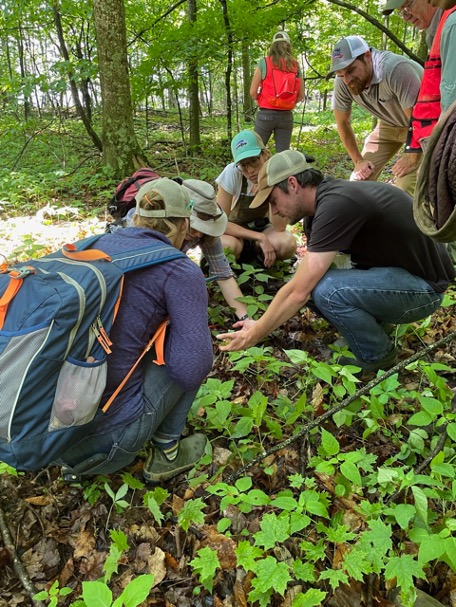On a blustery afternoon in June, agricultural and forestry technical advisors, including from USDA Natural Resources Conservation Service and University of Vermont Extension, met to observe and discuss healthy trees on a parcel of Vermont clay plain forest in Shelburne, VT.
Following several virtual meetings to discuss tree health in “Climate-Smart Agriculture and Forestry (CSAF) Mitigation Activities”, this gathering was the first time many of the professionals had met in person. Managed by Meach Cove Farms, the 280-acre woodland comprising sugar maple, red oak, birch, basswood, hickory and beech was an inspirational place to meet to exchange information about practices for healthy trees and learn from peers immersed in climate-related matters. Suzy Hodgson from the USDA Northeast Climate Hub’s Climate Learning Forum organized the visit to provide an opportunity for NRCS and Extension staff to discuss climate smart agricultural and forestry practices. Meach Cove Farms hosted the gathering and was enthusiastic to share their approach to monitoring and increasing carbon in forest soils and stand biomass.


